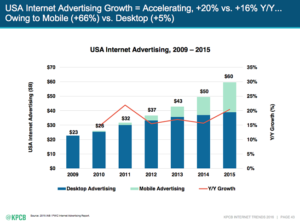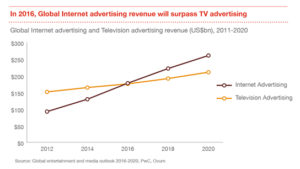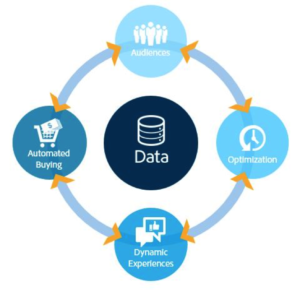What’s Happening with Digital Advertising Revenue?
What you need to know:
Many advertising publishers (your organization if you use advertising on your sites) are scratching their heads and wondering what is happening to their print and digital advertising revenue.
Most are internalizing the news and hype that Facebook is stealing away their advertisers and therefore revenue.
It is perhaps an easy excuse to explain away the revenue dips and the challenges. Facebook is, of course, having an impact but it isn’t the major factor impacting your advertising revenue. What Facebook has done effectively is offer the market the tools, measurement, data and opportunities they desire to reach the intended targets.

As digital and interaction and transactional data collection matures, those who have for years spent marketing dollars lavishly without question are now confronted with a significant challenge.
Prove the return on investment to superiors and demonstrate the return on investment (ROI) for the dollars spent.
We are in a digital world which brings many new opportunities but also offers us a significantly changing marketplace where prospect customers are being barraged with emails, messages, and news alerts all which fracture their attention.
We are therefore in a digital world that requires hyper targeting to segmented audiences to generate leads and convert those leads to paying customers, all accomplished by using personal, interaction, behavioral and performance data to match and convert prospect customers to the products and services being advertised. This is why the shift to inbound marketing and the use of marketing automation has become so critical.
It is ultimately all about the data and the knowledge that the data brings us about interaction, viewability, performance and if we did or didn’t generate a lead and convert that lead to a paying customer.
The First Dilemma
![]() A significant percentage of publishers are not yet at a level of sophistication with their data and analytics collection or management and reporting to demonstrate the true performance of the advertising in relation to their digital traffic.
A significant percentage of publishers are not yet at a level of sophistication with their data and analytics collection or management and reporting to demonstrate the true performance of the advertising in relation to their digital traffic.
Most are still focused on basic digital analytics like page views, visitors and sessions and haven’t yet explored how to collect, manage and communicate performance data back to their major sources of revenue: advertisers.
The viewability of an Ad isn’t represented by the page view measure, nor is it represented by a session. Those two general measures let you know a user has come to the site and viewed a page. He or she may have “viewed” the top of the page, read something in the middle and moved on. If the Ad is placed below the fold, the user didn’t actually see the Ad.
Therefore, the Ad wasn’t viewed and surely wasn’t clicked.
If a user/visitor landed on a page and quickly navigated to another, depending on the Ad placement, the user/visitor probably didn’t “view” it, even subconsciously.

You may have previously been “paid” for the view but I am confident if that hasn’t stopped, it will very soon.
The Second Dilemma
Most publishers are focused on reviewing anonymized high level digital performance data. This translates to how many visitors, returning visitors, page views and sessions a site or section of a site/mobile offering is receiving.
A high percentage of publishers simply take action or report out the high level data without understanding the impacts of invalid traffic, bounce rates, consumption of content and who the visitors/users actually are.
As a side note, research shows that content that surrounds or is presented with the Ad is important to produce interaction.
The Ad placement to relevant content also requires a level of management and sophistication to maintain or grow advertising revenue by proving the value you created for the advertiser.
Publishers need to move in the strategic and tactical direction to mature their data collection, understanding and tracking and build the competency to respond to their major revenue source: the advertisers.
All companies should see the value that the data provides to their own performance and how it removes the ambiguity in decision making.
The Third Dilemma
![]() The advertisers now understand the data they need and the data that is available to truly understand advertising performance, if an Ad was viewed, who viewed it and if the view resulted in a conversion.
The advertisers now understand the data they need and the data that is available to truly understand advertising performance, if an Ad was viewed, who viewed it and if the view resulted in a conversion.
Remember an advertiser’s goal is to generate leads and convert those leads to paying customers. It is all about acquisition, attribution and generating revenue. This should sound very familiar to any organization. You need to generate and grow revenue to remain a viable business. To do that you need new leads or to entice existing customers to buy more.
eMarketer’s recently published Customer Acquisition in North America reveals a few important trends:
- Building brand awareness of prospects in the funnel, recognizing an anonymous user as a known entity or signing up and/or making an actual purchase are all ways of quantifying customers.
- A common thread of winning digital acquisition strategies is data. The savviest marketers use data to inform their marketing mix across channels and devices (including measuring advertising effectiveness).
- Data can also help marketers be more relevant and personalized in their messages to prospects that you bring them. Filling in gaps in data creates a unified, single-customer view, opening the door for more tailored, audience-centric tactics—an essential part of a strong acquisition strategy. Read the Executive Summary if you want to learn more.
Today’s Chief Marketing Officers, regardless of organization size, are being pressured by their C level peers or superiors to bridge performance to marketing dollars spent. CEOs particularly are becoming more data driven and less “gut” oriented. It is all about acquisition and measurement of the marketing mix, including display advertising.
Today and tomorrow’s marketing budgets regardless whether campaigns are awareness or sales oriented will be data focused to ensure the targets are being reach, leads are generated, conversion is tracked and teams evaluated.
The Facebook Dilemma
![]() Facebook is offering advertisers most of what they seek to prove the return on investment.
Facebook is offering advertisers most of what they seek to prove the return on investment.
An advertiser can select or create a look alike audience that matches their target (geography, demographics, etc.), they can set the detail on when the Ad will be displayed, how it will be displayed and gain insight into how the Ad performed.
The performance information is gold to the advertiser. Although Facebook and its recently upgraded Business Manager aren’t perfect, they are offering something many publishers cannot.
The offerings and ability to target are resulting in a shift of some advertising dollars to Facebook. An additional driver of appeal is the average of 50 minutes per day individuals spend on Facebook.
Facebook is a factor but something you need to recognize as the elephant in the room. You know it is there, you know you can’t compete or play at that level but you can watch what they are doing and see how you can offer similar value.
You must, in that regard, focus on matching what advertisers want from you, become more data oriented and grow what intelligence you can share back to your advertisers.
The Programmatic Dilemma

Another major factor is the move and exponential growth of programmatic. Being an advertising publisher takes resources including retaining sales staff for direct and premium direct sales.
Programmatic reduces the requirement for resources, makes ad placement available in the market and introduces automation. It is often a no brainer to move into programmatic and significantly reduce operational overhead, sit back and collect the revenue.
It appears easy.
The challenges for any organization moving into programmatic are the immaturity of programmatic and the CPM rate suppression it can create as your advertising space competes against a multitude of others who vary their fees.
The shift to programmatic may also influence a publishers long tail relationships. In direct and premium direct models, the sales team acquires and nurtures relationships to ensure the advertiser continues to be a source of advertising revenue. Programmatic removes many of the opportunities to build these relationships and makes the publisher much more dependent on the variable universe of advertisers programmatic promotes.
No one is yet sure where programmatic is headed. It is dynamically changing as technologies, tracking and opportunities alter the display advertising universe. We all know what seems easy, often isn’t and may have longer term impacts yet to be revealed.
What should you do?
If you take anything from this blog post, please recognize the need to grow and mature the data you are collecting and managing to meet not only your advertisers needs but also your own. Today’s marketing, advertising and sales teams are recognizing the critical value of hyper-targeting, matching named users and understanding interaction and behavioral data to generate leads, converting leads to paying customers and demonstrating ROI on marketing spend.
This blog post brings forth some of the major factors impacting your advertising revenue. As each organization is very unique in their offerings and marketplace, there may be other factors influencing your revenue.
We work with organizations aspiring to diversify their revenue with advertising and also work with those who are already experiencing significant gains but need to make adjustments to protect and grow. Drop us a note about your challenges and we can share how we can help you achieve your goals and objectives.
If you want to learn more about behavioral data, goal attainment or analytics, please check out the blog posts listed below:
Demystifying Analytics for Editors and Publishers Blog Series
Conscious and Subconscious Decision Making


